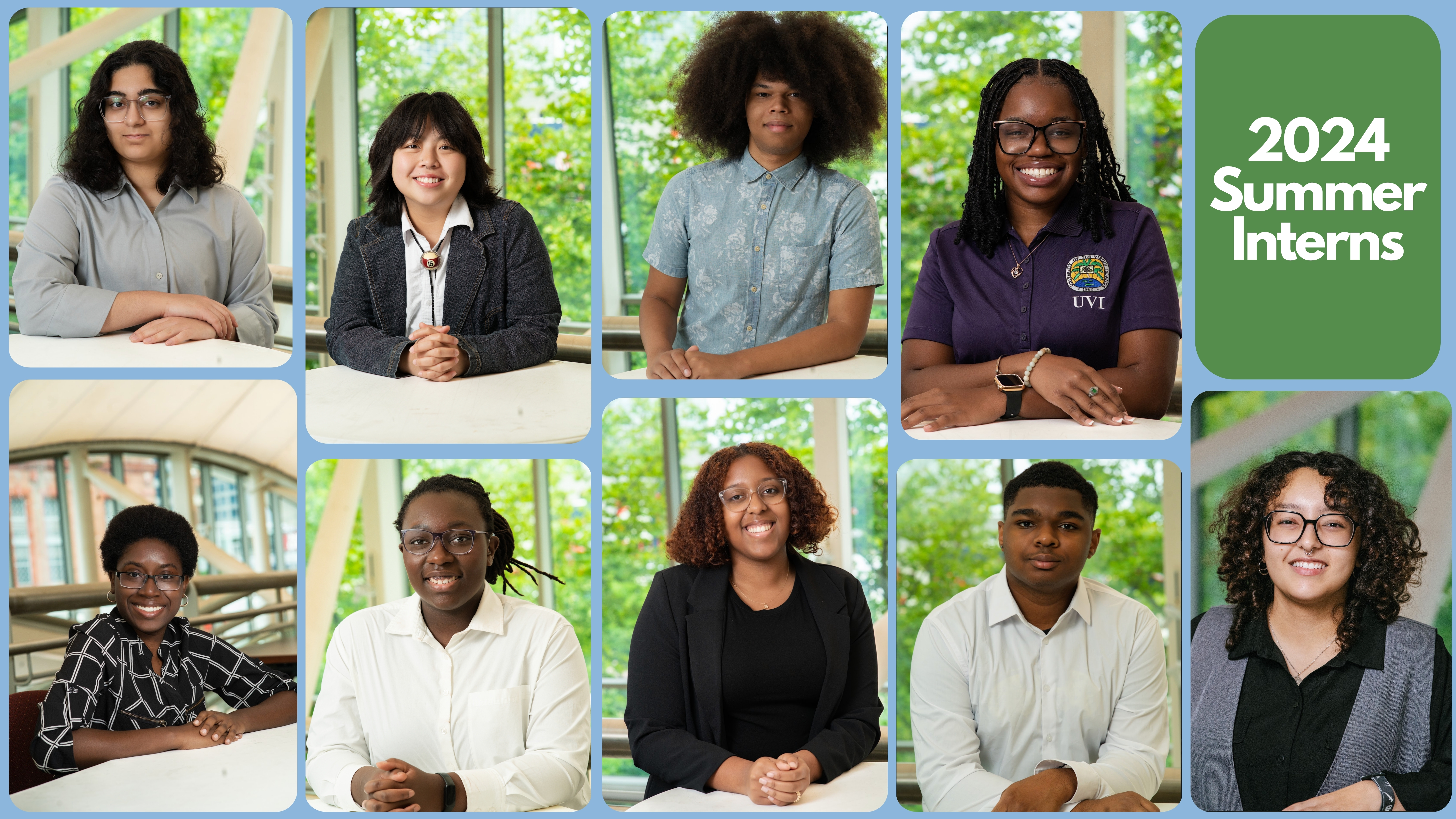Week 1: Let's Break the Ice!
It is sunny and 75 degrees on June 10th, and IMET is excited to welcome our newest summer interns! As the interns wait, they see the warm summer intern welcome greeting on our screens. Donald, our front door security, mentioned that the interns arrived very early, 8:20 to be exact! We can all relate to the first-day jitters. Think of your first day of high school or your first job. The interns are asked how they feel while the multipurpose room is set up. “Nervous but excited.” was the consensus.
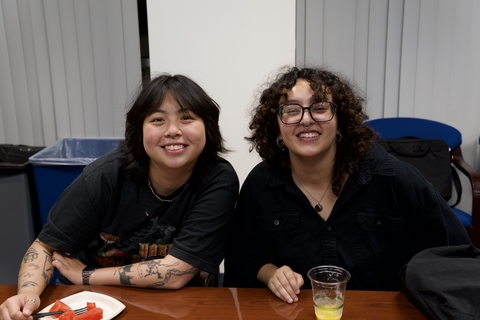
The interns didn't know it yet but were in great hands here at IMET. The IMET Summer Internship Program has a history of achieving outstanding results with undergraduate students all over Maryland. IMET Undergraduate Summer Internship Program provides hands-on research opportunities for undergraduate students from backgrounds with limited access to environmental/marine research opportunities. Each intern collaborates with a Principal Investigator (PI) on a dedicated research project within one of IMET's three focus areas: Sustainable Seafood Production; Environment, Animal, and Human Health; or Energy, Water, and the Environment. Beyond their lab work, interns participate in seminars, training sessions, and workshops throughout the summer, including a weekly Friday session featuring various speakers and activities.
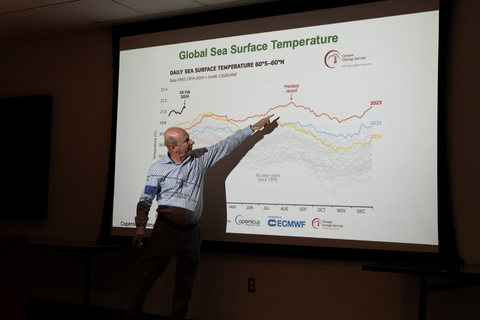
Introductions:
As the interns are escorted to the Multipurpose room, they begin to chat with one another over breakfast. Carol was the one to break the ice, introducing herself to every student. Some were quieter than others, but that's okay; first days can be awkward! The orientation began with a wonderful welcome by the Summer Internship director, Dr. Eric Schott, and an excellent and grounding presentation from our Executive Director, Russell Hill. Dr. Hill gave an overview of IMET and some of the groundbreaking discoveries that IMET scientists have played a role in. He emphasized the need for the new generation in marine science and how their presence today is pivotal for solving some of the biggest problems facing us, such as global sea level rises and increased population concerns.
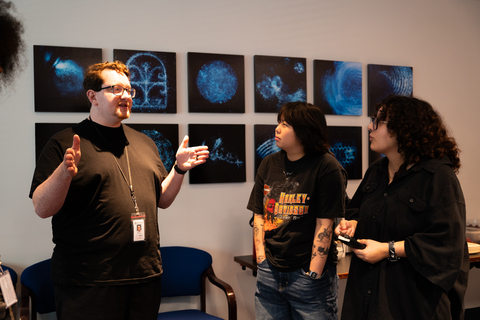
The mentors made their introductions to their interns and discussed potential career pathways and what they were all passionate about. When Maura asked Matt Stromberg why he chose engineering in a science field, he said: "Science asks questions, Engineering solves problems." At that moment, the interns made a valuable distinction that will assist them in making the right career choices in the future. The interns finished their first day with onboarding with Sarah Hughes and a building tour from Chénira Smith.
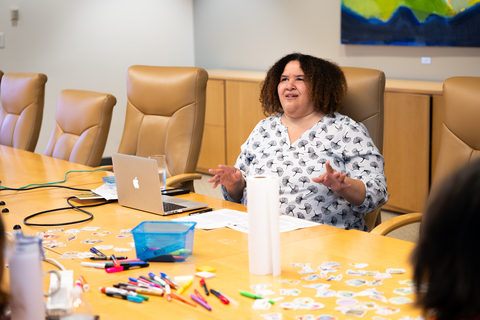
On Thursday, the interns participated in a Poetry in Science workshop with Dr. Kate Gillespie. This workshop specializes in communicating science in a way that will inspire public audiences and also bring awareness to scientific concepts. The interns put this into practice by identifying words that represent an emotion and eliminating the very technical terms in a scientific abstract. This process reveals the words and phrases that will become an artistic product extracted from something rigid and often hard to understand. It is now a piece of written art that speaks to audiences despite their scientific background.
It's time to meet our interns!
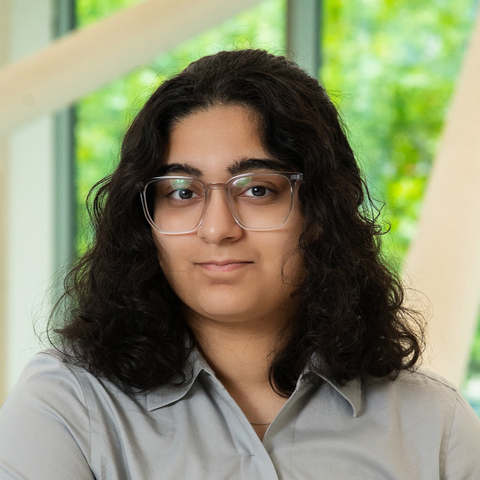
Name: Divina Bhatia
School: UMBC
School Year: Rising Senior/4th Year Undergrad
Major: Biological Sciences
From: Ijamsville, MD
Current Career Goal: Marine Researcher
Mentor: Dr. Jim Du
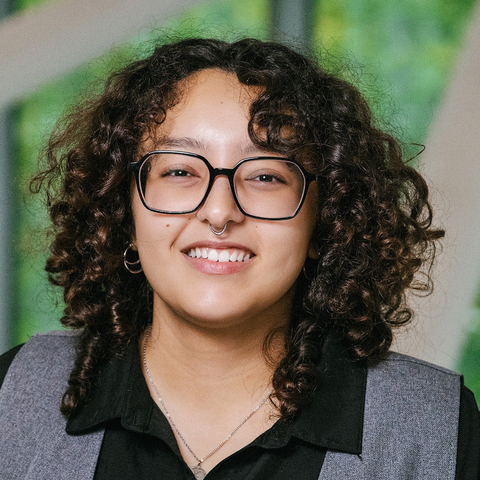
Name: Valentina Pérez García
School: Ana G. Mendez University
School Year: Rising Junior
Major: Biology
From: Puerto Rico
Current Career Goal: Pursuing a career in academia to advance research in various fields of biology.
Mentor: Dr. Allison Tracy
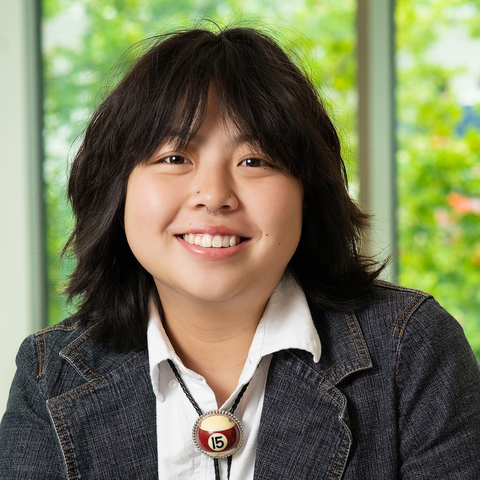
Name: Joanna Chen
School: University of California, Berkeley
School Year: Rising Junior
Major: Marine Science & Environmental Earth Science
From: San Francisco, CA
Current Career Goal: Fish Ecologist & Evolutionary Biologist
Mentor: Matthew Stromberg
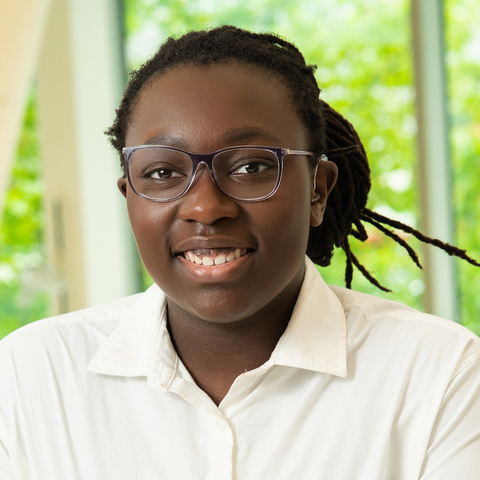
Name: Carol Ceasar
School: UMBC
School Year: Rising Sophomore
Major: Bioinformatics and Computational Biology
From: Elkridge, MD
Current Career Goal: No idea! A career that lets me indulge in both my love of biology and of computer science
Mentor: Dr. Tsetso Bachvaroff
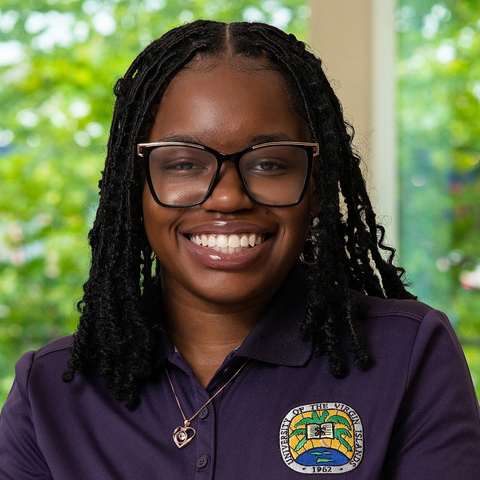
Name: Maura Moneé Richardson
School: The University of the Virgin Islands
School Year: Rising senior
Major: Marine Biology with a minor in Environmental Science
From: Saint Thomas, U.S. Virgin Islands
Current Career Goal: I want to complete my bachelor's and then pursue an MD/Ph.D. in veterinary science. I aspire to be an Aquatic Veterinarian focusing on marine life safety, rescue, rehabilitation, and release while educating the younger generation. I also desire to one day own an Aquarium and turn it into a marine hospital locally in the Virgin Islands.
Mentor: Dr. Jim Du
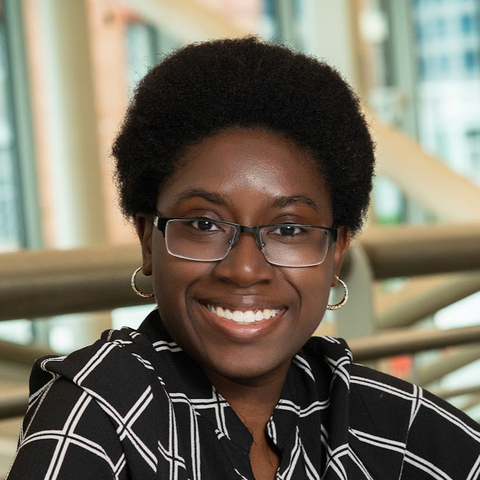
Name: Jenica Henry
School: University of Florida
School Year: Rising Senior
Major: Biology
From: Davenport, FL
Current Career Goal: Becoming a lab technician or being in a research career focusing on marine microorganisms.
Mentor: Dr. Russell Hill
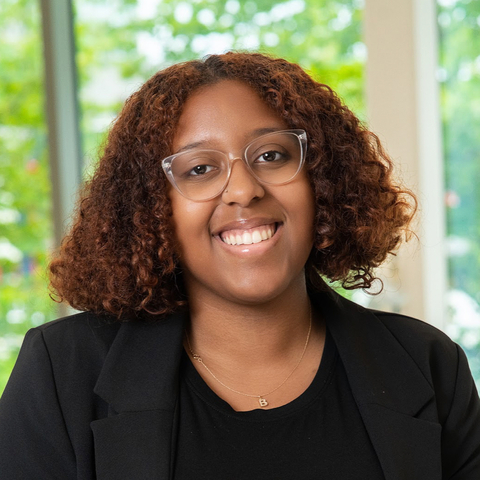
Name: Bria Young
School: University of Maryland, College Park
School Year: Rising Junior
Major: Environmental Science and Technology: Ecosystem Health
From: Windsor Mill, MD
Current Career Goal: To follow a career path focusing on environmental health, specifically looking more into environmental toxicology and human health effects. Also, doing more work within the world of Environmental Justice.
Mentor: Yu Ting
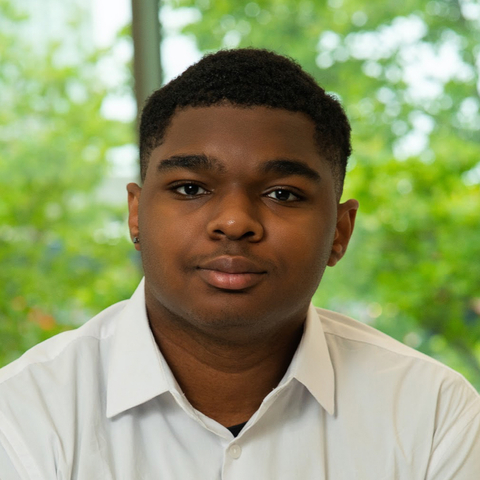
Name: Braxton Peace
School: Stony Brook University
School Year: Freshman
Major: Marine Science
From: Washington, D.C.
Current Career Goal: Deep sea researcher
Mentor: Dr. Feng Chen
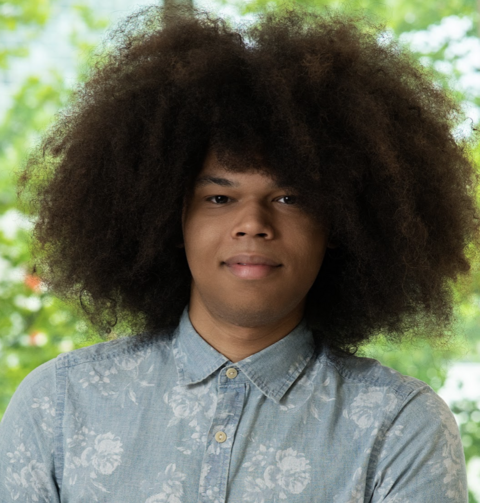
Name: Mason Chialastri
School: UMBC
School Year: Rising Sophomore
Major: Biology
From: Ellicott City, Maryland
Current Career Goal: Undecided
Mentor: Matthew Stromberg
Week 2: Finding Your Path
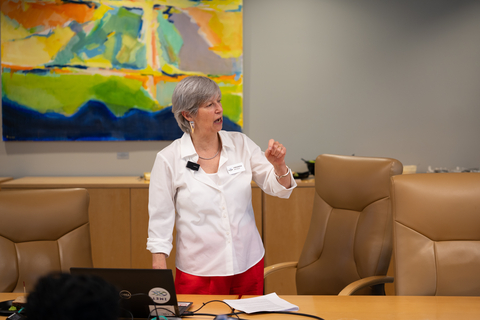
MD Sea Grant Workshop: Evolving a Career in Marine Science with Fredrika Moser
Fredrika Moser is the director of the Maryland Sea Grant College Program, where she works with communicators, scientists, educators, and university extension agents to address critical coastal, estuarine, and watershed issues in Maryland, particularly focusing on the Chesapeake Bay.
With a background in Earth and Environmental Sciences, she connects scientific research with government, private industry, and the public to promote informed decision-making. Moser's career blends her passion for natural science and societal impact, emphasizing education and outreach in marine and coastal sciences. Moser led a workshop for the summer interns that gave insight on her career path in marine science and highlighting her commitment to education and outreach in marine and coastal sciences.
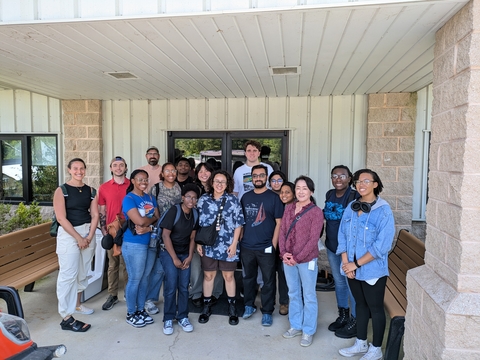
A Trip to The Freshwater Institute:
On June 20th, the interns took a trip to The Freshwater Institute.
The Freshwater Institute, part of The Conservation Fund, focuses on advancing sustainable aquaculture. They aim to strengthen the aquaculture industry, reduce seafood import dependency, and ensure safe, high-quality seafood. The institute pioneers research and technology to minimize environmental impact and address climate change. Key projects include developing fast-growing salmon strains, AI tools for data collection, and methods to repurpose fish waste. Their work also includes improving fish farm efficiency and product quality.
The Summer intern trip to Freshwater was supported in part by Maryland Sea Grant's grant to IMET for aquaculture
Here are some things the interns said about their experiences:
The Freshwater Institute was extremely informative because it demonstrated how the different branches of STEM came together to solve problems. I especially enjoyed learning how they turned the fish waste into fertilizer. The trip gave me a lot of insights into how impactful every person on a team is and helped me come up with more ideas for my final project.
The Freshwater Institute was really cool! We toured the facility and got to see sterile salmon at different life stages. The two guys who worked there gave us really good insight on how they grow and manage the fish there. We also saw an area where they convert the waste from the fish into compost that can be used for plant growth to make sure each part of the fish was utilized.
Fun at The Aquarium!
The interns enjoyed a well needed break at the National Aquarium on Friday. For those who have never been, The National Aquarium in Baltimore is located at the Inner Harbor and is a neighbor of IMET.
This aquarium is a renowned aquatic education and conservation center. It houses over 20,000 animals, including fish, birds, amphibians, reptiles, and marine mammals. The aquarium emphasizes conservation efforts and sustainable practices, offering educational programs and interactive exhibits to inspire visitors about marine life and environmental stewardship.
Week 3: Creativity in Communication
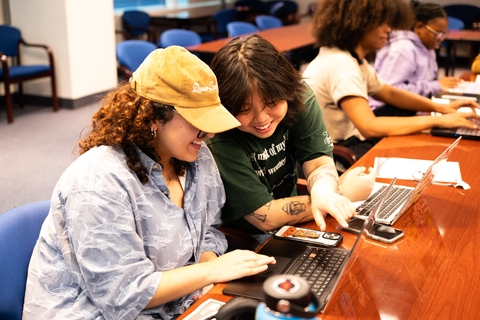
Welcome to week three! This week, the interns will learn how to communicate their science to various audiences. The tools and strategies learned this week will be pivotal to their final presentation day, which will be held on August 8.
IAN Communication Workshop: Day 1
The Integration and Application Network (IAN) of the University of Maryland Center for Environmental Science (UMCES) provided a two-day Science Communication Course to our summer undergraduate interns.
During the course interns learned and practiced how to communicate science effectively with various audiences. They practiced creating narratives with their own hand drawn images, and with the help of Adobe designed documents to present their current research projects. Annie Carew, Ann Foo, and Anikka Fife presented many examples of research posters that will provide guidance as the interns begin developing their own final research posters and presentations.
Research Poster Design with Kia Ramarui
Graduate student Kia Ramarui led a Research Poster Design Workshop to provide in depth guidance for research poster development. The group learned tips and tricks for how to create an engaging poster that will draw in anyone for further conversation.
Reviewing the different styles of posters that you can create based on what you are trying to communicate and to whom, such as the scientific technique poster created by Kia sparked a lot of interest among the group. It is always nice when the group can interact with graduate students from other labs and learn about their research.
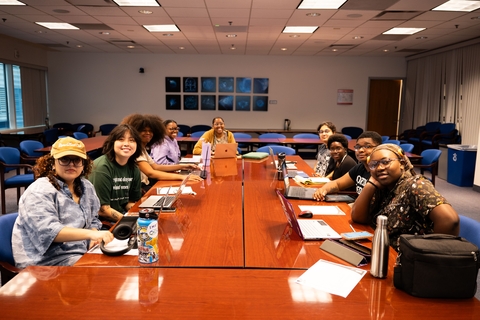
IAN Communication Workshop: Day 2
The interns finished their two- day communication workshop and had a great time! Read what Maura Moneé had to say about her experience.
The IAN Communication workshop was one of the best workshops offered through this internship program so far. As someone who has always used Canva and never branched out into other digital platforms for creating posters or digital diagrams, this workshop was eye-opening.
Week 4: Putting Down The Roots
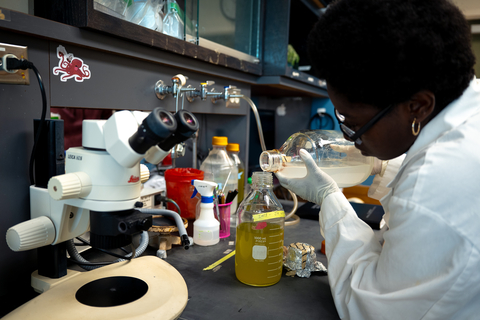
Time is flying! Week four is here and our interns are ready to get working.
By week four, the interns are comfortable in their labs and have locked down their research project topics. For this week's blog, we have highlighted a few of the student's topics. We will see more of the interns' topics in week five.
From mitigating the off-flavor in RAS salmon, reducing CO 2 from flue gas and finding oyster disease solutions, our interns have some amazing research topics.
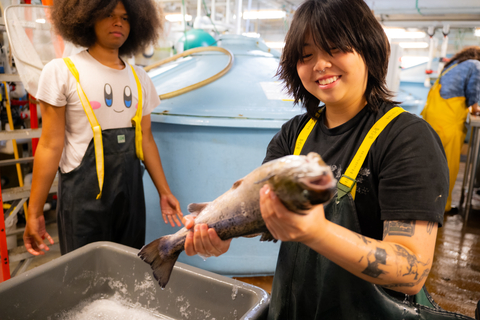
Joanna Chen and Mason Chialastri
Topic: Geosmin Detection Using Aptamer-Based Biosensors in Recirculating Aquaculture Systems (RAS) & Measuring the Diffusivity and Partitioning Coefficients of Geosmin
Mentor: Matthew Stromberg
Geosmin is an earthy off-flavor chemical that is prominent in recirculating aquaculture systems. The removal of this chemical is important to ensure that aquaculture is profitable and can continue to take pressure off of coastal fishing that has become unsustainable in recent years . Geosmin measurements can take weeks with shipping and dissection to properly diagnose.
In order to offer more effective treatment, Joanna and Mason will create a biosensor that will be used to determine geosmin concentrations for individuals without dissection or analysis of specific tanks.
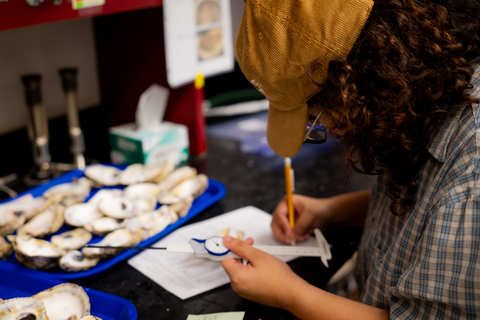
Valentina Pérez García
Topic: Diagnosing Co-Infecting Parasites and Pests in the Eastern Oyster Across the Chesapeake Bay
Mentor: Dr. Allison Tracy
An important contributor to Chesapeake Bay’s health is the Eastern oyster, Crassostrea virginica, whose capacity to filter water and maintain productive estuaries is threatened by co-infecting parasites and pests. Valentina aims to diagnose four such co-infecting organisms—two shell bio-eroder pests (Cliona and Polydora) and two tissue parasites (Haplosporidium nelsoni and Perkinsus marinus)—across different salinity gradients in the Bay.
Her research involves meticulous analysis of oyster samples from eight sites within four tributaries, assessing disease prevalence and intensity using diagnostic tests and visual evaluations. She aims to correlate these infection patterns with water quality variables like dissolved oxygen, turbidity, and phosphorus.
By comparing collected data with previous 2020 data, Valentina will seek to identify long-term trends in parasite behavior and their interactions with environmental changes, informing future disease management strategies in the Chesapeake Bay.
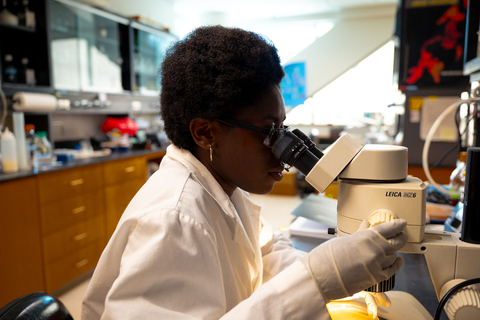
Jenica Henry
Topic: Using the symbiotic relationship of Microalgae and Bacteria to remove CO2 from Flue Gas
Mentor: Dr. Russell Hill
Microalgae is one effective way of reducing CO 2 from flue gas by using CO 2 to produce oxygen and biomass. However, because the high amounts of CO 2 from flue gas are released too quickly compared to what microalgae can take in, microalgae alone would not be efficient.
Using the microalga Nannochloropsis oceanica, known as IMET1, Jenica will experiment to find bacteria that can aid CO 2 intake of microalgae. Stay tuned for next week as we will be highlighting more research topics from the interns!
Week 5: Lots of Lab Work
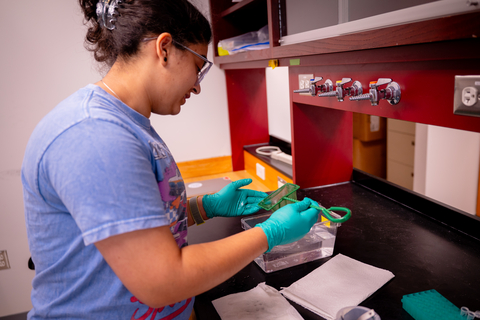
Welcome to week five! This week, the interns have been very busy in their labs and we are excited to show you more of the interns' research topics as well as a special visit from PEARL and Sea Grant Interns.
Divina Bhatia
Topic: Analyzing HSP70-8 functions using zebrafish mutant models
Heat shock proteins help cells deal with stress from the environment or genetic issues. However, we don't fully understand how two specific heat shock proteins, HSP70-8 and HSP70-8b, function during embryonic development.
To learn more, we are creating and studying mutant zebrafish models. Zebrafish are useful for this research because their HSP70-8 and HSP70-8b genes strongly react to environmental stress and genetic defects, especially in their muscles and embryos. By analyzing single and double mutants, we aim to uncover the roles of these proteins in development.
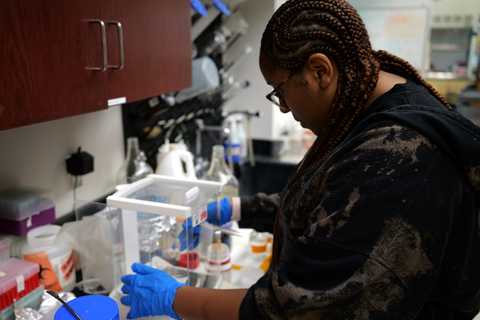
Bria Young
Topic: Verifying the Most beneficial B-Vitamin for Growth of DF-1 Bacteria
DF-1 bacteria, also known as Dehalobium chlorocoercia is an anaerobic bacteria that aids in the breakdown of Polychlorinated Biphenyls (PCBs), a very toxic, difficult to degrade chemical that has remained in the environment for years.
DF-1 cells plus other aerobic bacteria are sprayed onto SediMite (a sand, clay, and activated carbon pellet), which is then put into PCB impacted sediments to help degrade them. To grow more DF-1 to be used, a variety of conditions are needed, specifically the presence of B-vitamins to accelerate growth but, we are not sure of what specific vitamin is accelerating growth the most. Bria will be performing experiments to determine the most beneficial B-vitamin that aids in the growth of the DF-1 bacteria.
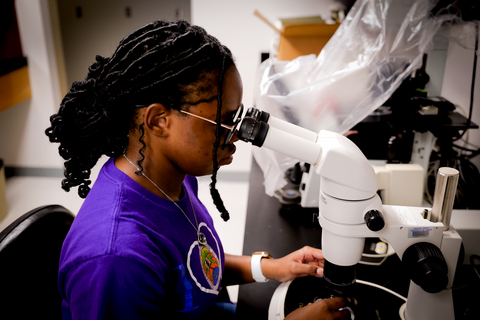
Maura Moneé Richardson
Topic: Genetic mutations in Zebrafish Smyd-1b(+/-) and HSF-1(+/-)
Maura will be working in Dr. Jim Du's zebrafish lab, focusing on studying gene mutations in zebrafish. She will specifically look at two genes: Smyd-1b and HSF-1. Her task involves managing a tank of zebrafish that are a mix of Smyd-1b and HSF-1 gene variations. From this tank, Maura will collect groups of 12-18 fish and analyze each one to determine their genetic makeup.
The main focus of her project is to find both a male and female fish with specific mutant genes, Smyd-1b(+/-) and HSF-1(-/-). Once she identifies these mutants, Maura will breed them and study their offspring. She will observe how these gene combinations affect the lifespan, growth, and physical characteristics of the baby fish. This research aims to uncover how these specific genes influence zebrafish development.
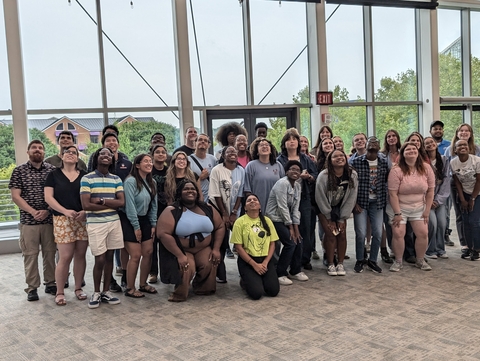
PEARL and Sea Grant Intern Visit
The PEARL and Sea Grant interns had an enriching visit to IMET, starting their day with a lunch break from 11:35 am to 12:00 pm. Following lunch, they participated in a Careers in Science Panel. The panel featured insightful talks from four distinguished professionals: Micah Miles from FEMA, Omowali Makari from Morgan State University, Fred Tutman from Patuxent Riverkeeper, and Michael Chanov from EA Engineering.
The day wrapped up with a social hour from 1:30 pm to 2:30 pm, where interns had the chance to network, enjoy snacks, and discuss their experiences.
Week 6: More Than Halfway There!
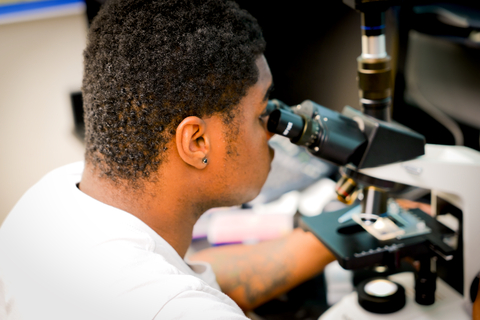
Week 6 has arrived and we are revealing our final intern topics as well as a MEES graduate guest speaker and a workshop from IMET's Dr. Nina Lamba.
Braxton Peace
Topic: Investigating the Impact of pH on Scenedesmus Obliquus Flocculation to Maximize Harvesting Potential
Microalgae have the potential to completely change our world, providing biofuels and a sustainable food source for fish and other organisms. However, harvesting microalgae is difficult, and methods such as centrifugation are costly because they use lots of energy.
Scenedesmus Obliquus is one of the few microalgal strains that can self-flocculate, creating large "flocs" of microalgae. Therefore, I will conduct experiments to induce flocculation for easier harvesting.
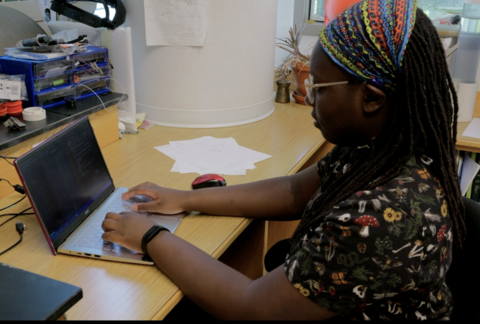
Carol Ceasar
Topic: Uncovering the immunity gene repertoire in the blue crab Callinectes sapidus genome: The ficolin protein family as a case study
The blue crab, Callinectes sapidus, is crucial to the Chesapeake Bay's fishing industry and ecosystem. Unlike humans, blue crabs don't have adaptive immunity, so they rely on immune proteins like ficolins to recognize and fight infections. Scientists found the gene sequences for ficolins in the blue crab's genome and adjusted these sequences to ensure they were accurate, focusing on important parts that are called intron/exon boundaries and reading frames.
Further analysis compared these corrected ficolin proteins with similar proteins from other species. This comparison aimed to confirm the accuracy and consistency of the corrected sequences. By improving the quality of these gene sequences, scientists can better understand the immune system of blue crabs and potentially apply this knowledge to other studies.
Guest Speaker: Suzanne Dorsey
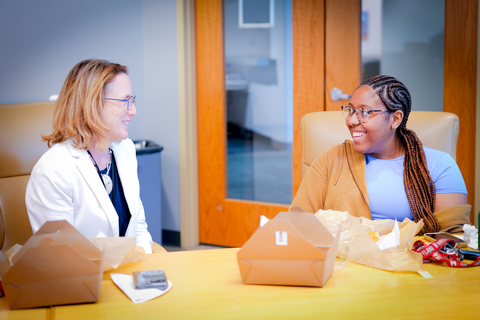
The IMET Summer Interns welcomed Suzanne Dorsey, a MEES Graduate and Deputy Secretary Maryland Department of the Environment on July 16th.
Suzanne sat down with our ambitious interns to discuss career goals and pathways connected in the environmental sciences. Her visit provided a unique opportunity for the interns to connect with a leader in the industry and gain a deeper understanding of the professional landscape they are preparing to enter.
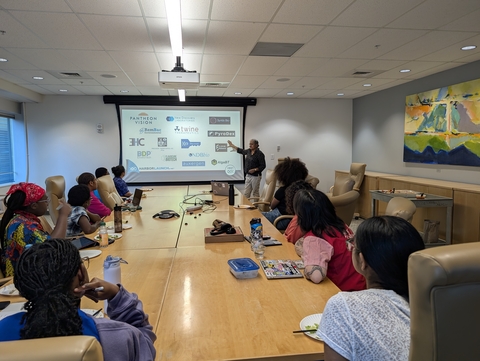
Connecting Bench to Business with Dr. Nina Lamba
Nina Lamba, the director of the REEF program, recently led a workshop titled "From Bench to Business" for the IMET Summer Interns.
In this session, Nina highlighted how skills developed in scientific research can be leveraged to succeed in the business world. She drew from the REEF program's principles, demonstrating to the interns how they can transition from being bench scientists to business leaders.
Through interactive discussions and real-world examples, Nina inspired the interns to envision entrepreneurial pathways in marine and environmental sciences, showing them that their scientific expertise can be a powerful foundation for creating impactful businesses.
Week Seven & Eight: The Final Weeks
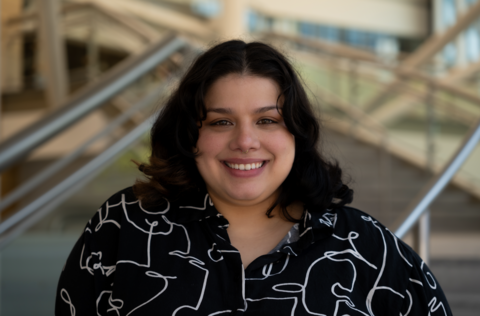
The interns have been busy working on their projects for these two weeks, with the majority of time dedicated to lab work.
The interns had a field trip to the Patuxent Environmental & Aquatic Research Lab, completed lab work resumes, and had a lunch session with IMET’s Olivia Pares where she shares valuable advice on applying to graduate school and fellowships and graduate student visit from Jamal Childs, and a Chesapeake Conservancy & Climate Corps member.
Trip to the Patuxent Environmental & Aquatic Research Laboratory
The Morgan State University Patuxent Environmental & Aquatic Research Laboratory (PEARL) is located 80 miles south of the main campus on the Patuxent River, a key Chesapeake Bay tributary. Established in 1967, PEARL began as a modest research station to study the environmental impact of local power plants.
Over the decades, PEARL expanded its research to include long-term studies of blue crabs, oysters, and finfish, as well as plankton monitoring. Today, PEARL combines historic research with cutting-edge studies on microplastics, carbon cycling, and ecological restoration. It also offers robust educational opportunities through undergraduate internships, graduate assistantships, and a new B.S. in Coastal Science & Policy, integrating natural and social sciences for comprehensive training. This was a great opportunity for the interns to see how other universities are involved in marine sciences.
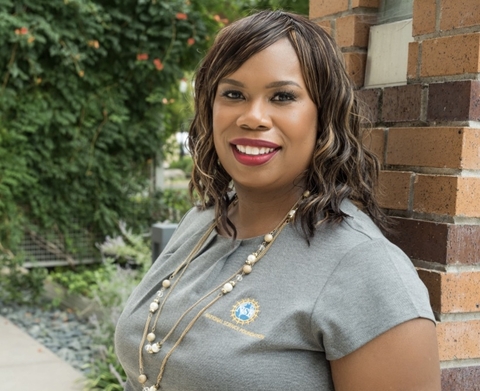
Guest Speaker: Kandis Boyd
Kandis Boyd gave a 50 minute presentation on the 10 Laws of Leadership and shared my 30+ years of experience and insight with the summer interns.
Dr. Kandis Boyd is a trailblazer in Portfolio Management, Strategic Leadership, and STEAM, with nearly 30 years of experience mentoring in environmental and atmospheric sciences. In 1996, she became the first African-American woman to earn a Meteorology degree from Iowa State University. She holds dual master’s degrees and a doctorate in Public Administration, with a focus on leadership. Certified in project management, Dr. Boyd has led transformative initiatives across NOAA, NSF, and the EPA, rising to a Senior Executive Service position in 2020.
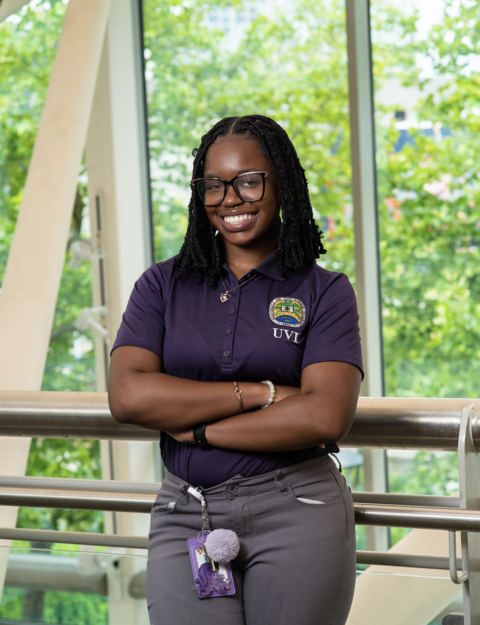
An Intern Testimonial: Maura Moneé
"Dr. Kandis Boyd was one of the best guest speakers we had at IMET. Like previous speakers, she shared her past and the journey that led her to her current position. However, what set Dr. Boyd apart was her presentation of the "10 Laws of Leadership." These laws were not only insightful but also applicable to personal growth beyond the lab or workplace.
Having Dr. Boyd speak to us was one of the best experiences of my life. She opened doors for us, showing that we should never give up on our futures. She inspired us to leave a legacy and reminded us that our impact on the world defines who we are. Dr. Boyd demonstrated that we could pursue multiple careers and still be successful, emphasizing that it's not where you start but how you finish that proves your capabilities. I believe Dr. Boyd is a leader who will undoubtedly inspire and guide others."
Final Presentation Week!
As the IMET Summer Internship Program for 2024 comes to a close, the interns showcased their final presentations to an audience filled with family, friends, and mentors. These presentations were more than just a summary of the research projects; they were also a representation of the hard work and experiences they have gathered during their time here at IMET.
Each intern presented their findings, highlighting the significant contributions they made in their respective topics. Their work, supported by the guidance of IMET’s mentors, shines a bright light on the future of environmental and marine science. The day ended with lunch for the interns, to celebrate their accomplishments and to celebrate the community that bloomed during the summer. The friendships and professional networks built here will continue to flourish, providing a strong foundation for the interns as they move forward in their careers.
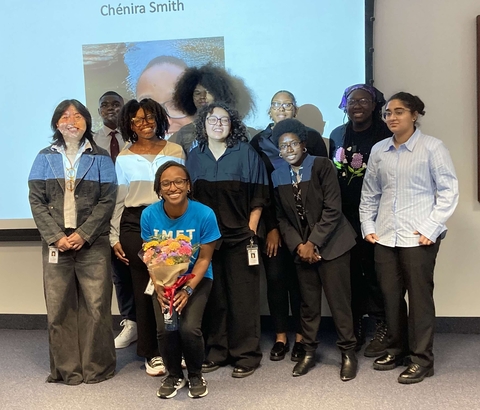
As they move to the next chapter, the knowledge and experiences gained at IMET will serve as a guide that inspires them to tackle the pressing environmental challenges of our time. The future of marine and environmental science looks much brighter with these emerging scientists leading the way.
Until next year!


